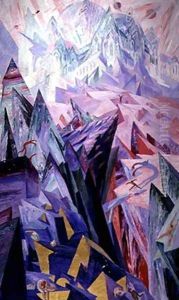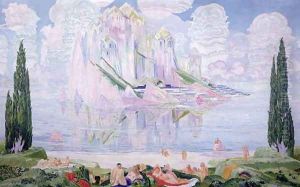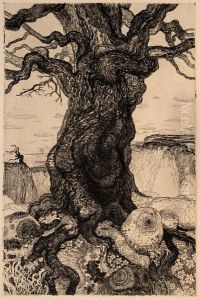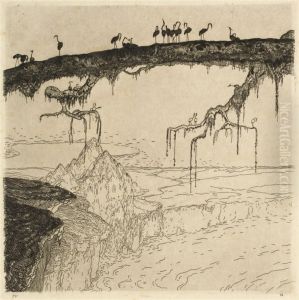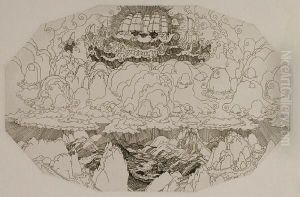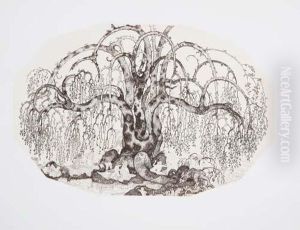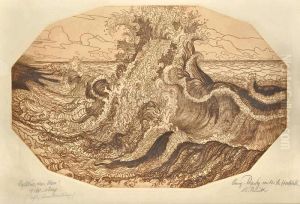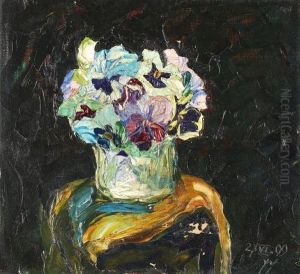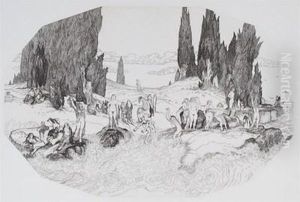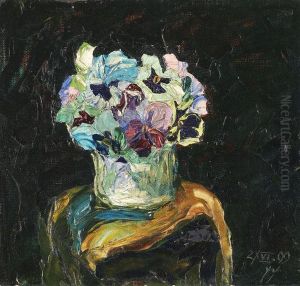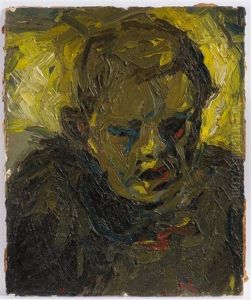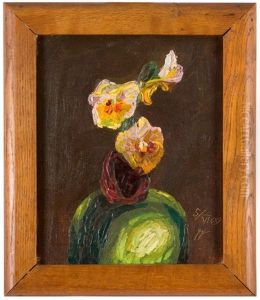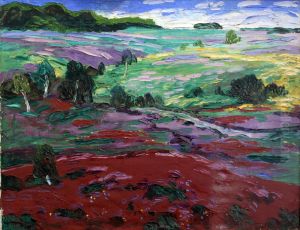Wenzel Hablik Paintings
Wenzel Hablik, born on August 4, 1881, in Brüx, Bohemia (now Most, Czech Republic), was a significant figure in the German Expressionist movement as well as being involved in architectural design, painting, graphic work, jewelry, and furniture design. His work often delved into utopian and fantastical realms, reflecting a unique blend of expressionism and visionary architecture.
Hablik attended the Royal School of Applied Arts in Prague between 1899 and 1901, where he began his formal education in the arts. He moved to Germany in 1902, settling in Itzehoe in 1907, which would remain his home for the rest of his life. His early works were influenced by his interest in natural sciences and theosophy, which led him to produce art that explored cosmic themes and idealistic architectural visions.
One of the defining aspects of Hablik's oeuvre was his exploration of utopian architectural spaces, often characterized by crystalline structures and fantastical, sweeping environments that seem to transcend the physical limitations of the world. These creations were not just escapist fantasies but were also imbued with a sense of social utopianism, reflecting his belief in the transformative power of art and architecture.
In 1919, Hablik became a member of the November Group, a collective of German artists and architects who sought to integrate their art into the revolutionary aspirations of the time. His work from this period is marked by a turn towards more abstract forms, though he never abandoned his fascination with fantastical and utopian themes.
Despite his visionary ideas, Hablik was also engaged in more practical pursuits. He designed textiles, furniture, and interiors, and was involved in the Werkbund, an association of artists, architects, designers, and industrialists that aimed to bring Germany to the forefront of modern design.
Hablik's legacy is one of a multi-faceted artist who straddled the worlds of the practical and the fantastical. His work prefigured later movements in speculative architecture and continues to be celebrated for its imaginative power and its synthesis of art and utopian thought. Wenzel Hablik died on March 24, 1934, in Itzehoe, leaving behind a body of work that continues to inspire and intrigue.
